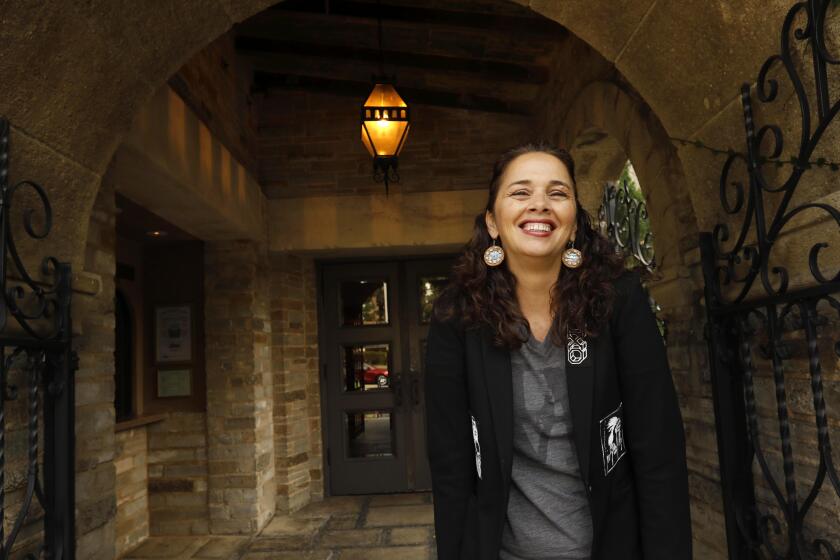Music Review : A Nog Toast to a Stylishly Handled ‘Messiah’
Though its first performance (April 13, 1742) and all subsequent performances under Handel’s direction had nothing to do with Christmas, his “Messiah” is now considered so de rigueur during the holiday season that some people would no sooner miss the oratorio than their seasonal egg nog. Then, as with the beverage, it’s forgotten the rest of the year.
In the tradition of giving them what they want, the Pacific Symphony presented its 14th annual “Messiah” at a sold-out Segerstrom Hall--on a shopping Saturday afternoon a week before Christmas, no less. The names on the marquee were hardly household names, but that didn’t matter: Handel’s “Messiah” was in the house.
As it turned out, though, the relative unknowns were worth coming to hear. Richard Westerfield--whose main claim to fame early in his career seems to be that he’s a “principal cover conductor” (read understudy and bridesmaid) for the New York Philharmonic--proved to be an enlightened and sure-handed leader.
With the reduced forces of the Pacific Symphony (30 in all) and the Pacific Chorale (a slim 60), Westerfield fashioned a “Messiah” that incorporated elements of the so-called authentic style.
His violins (for the most part) eschewed vibrato, producing appropriately steely, wheezy sounds. He sculpted phrases with rugged articulations, firm and lithe rhythms, spaces between notes and halting cadences.
He got the Pacific Chorale to sing with feathery lightness, transparency and speed.
The solo quartet was headed by soprano Andrea Matthews, who revealed a genuinely pretty voice, lustrous and graceful, which she used straightforwardly yet intelligently. Mezzo-soprano Melissa Thorburn sang her solos with fluid clarity, though in her low-key approach she missed a dramatic opportunity or two.
Tenor Stanley Cornett sounded frail on occasion, out-of-tune at others, but generally dispatched his music handily. William Parcher displayed a cavernous baritone and went in mostly for stentorian rhetoric (his sixteenth-note runs sounded especially ponderous), but he could also wax sensitive in a charming way.
*
Readily responding to Westerfield’s direction, the Pacific Chorale didn’t labor for speed or struggle for softness. Words mattered. Its fortes were crisp and forthright, if not particularly imposing. Its phrasing was meticulous and varied and built steadily toward climaxes.
The Pacific Symphony produced sounds both alert and full of character throughout, accompanying recitatives and arias with especial care and elegance.
Still, for all its strengths, this “Messiah” was no model of precision, though it was never slack--call it rough and ready. It got the job done. Now to the nog.
More to Read
The biggest entertainment stories
Get our big stories about Hollywood, film, television, music, arts, culture and more right in your inbox as soon as they publish.
You may occasionally receive promotional content from the Los Angeles Times.





